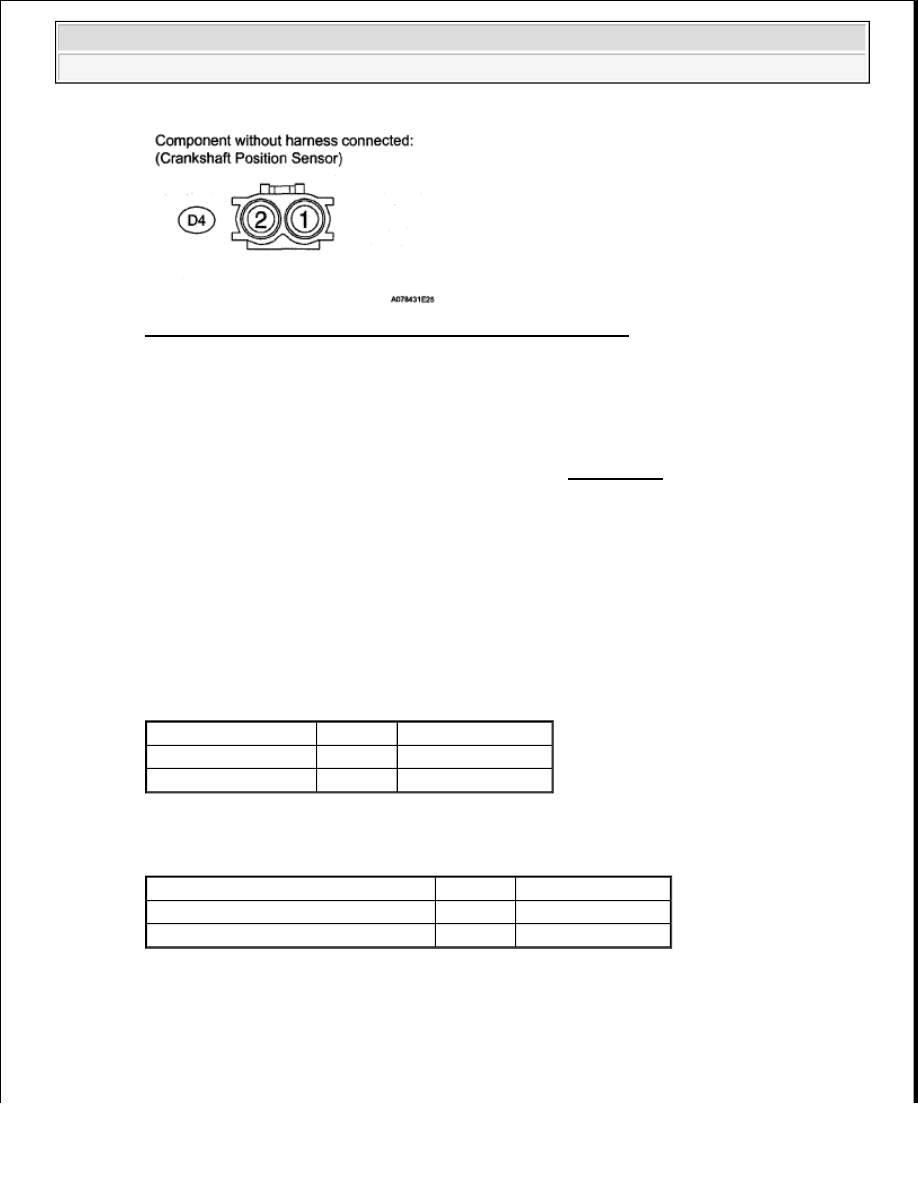Content .. 1194 1195 1196 1197 ..
Toyota Tundra. Manual - part 1196

Fig. 121: Identifying D4 Crankshaft Position Sensor Connector
HINT:
The terms "Cold" and "Hot" refer to the temperature of the sensor. Cold means approximately -10
to 50°C (14 to 122°F). Hot means approximately 50 to 100°C (122 to 212°F).
NG : REPLACE CRANKSHAFT POSITION SENSOR (See REMOVAL )
OK : Go to next step
3. CHECK HARNESS AND CONNECTOR (CRANKSHAFT POSITION SENSOR - ECM)
a. Disconnect the D4 CKP sensor connector.
b. Disconnect the D74 ECM connector.
c. Measure the resistance according to the value(s) in the table below.
Standard resistance (Check for open)
TESTER CONNECTION SPECIFIED CONDITION
Standard resistance (Check for short)
TESTER CONNECTION SPECIFIED CONDITION
NG : REPAIR OR REPLACE HARNESS OR CONNECTOR
Tester Connection
Condition Specified Condition
D4-1 - D74-110 (NE+) Always
Below 1 ohms
D4-2 - D74-111 (NE-)
Always
Below 1 ohms
Tester Connection
Condition Specified Condition
D4-1 or D74-110 (NE+) - Body ground Always
10 kohms or higher
D4-2 or D74-111 (NE-) - Body ground
Always
10 kohms or higher
2008 Toyota Tundra
2008 ENGINE PERFORMANCE Engine Control System (1GR-FE) - Tundra